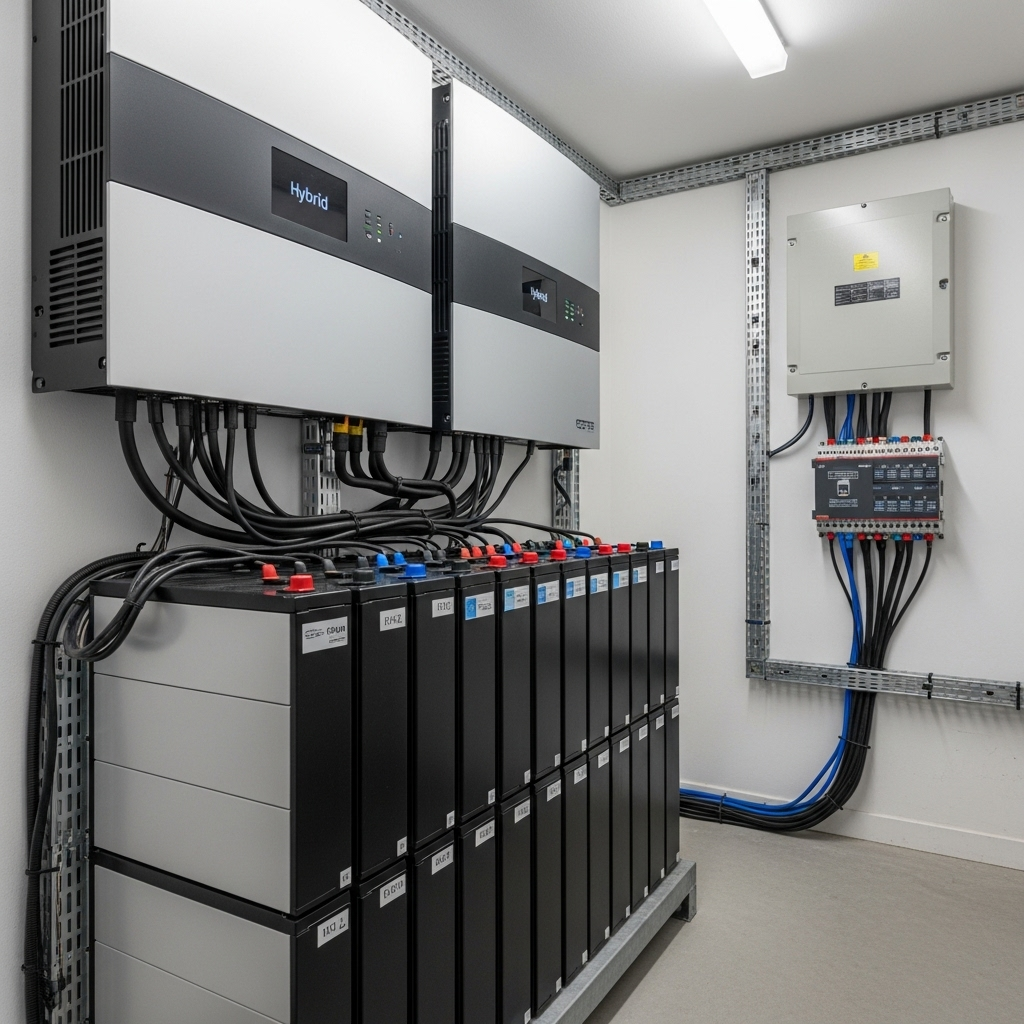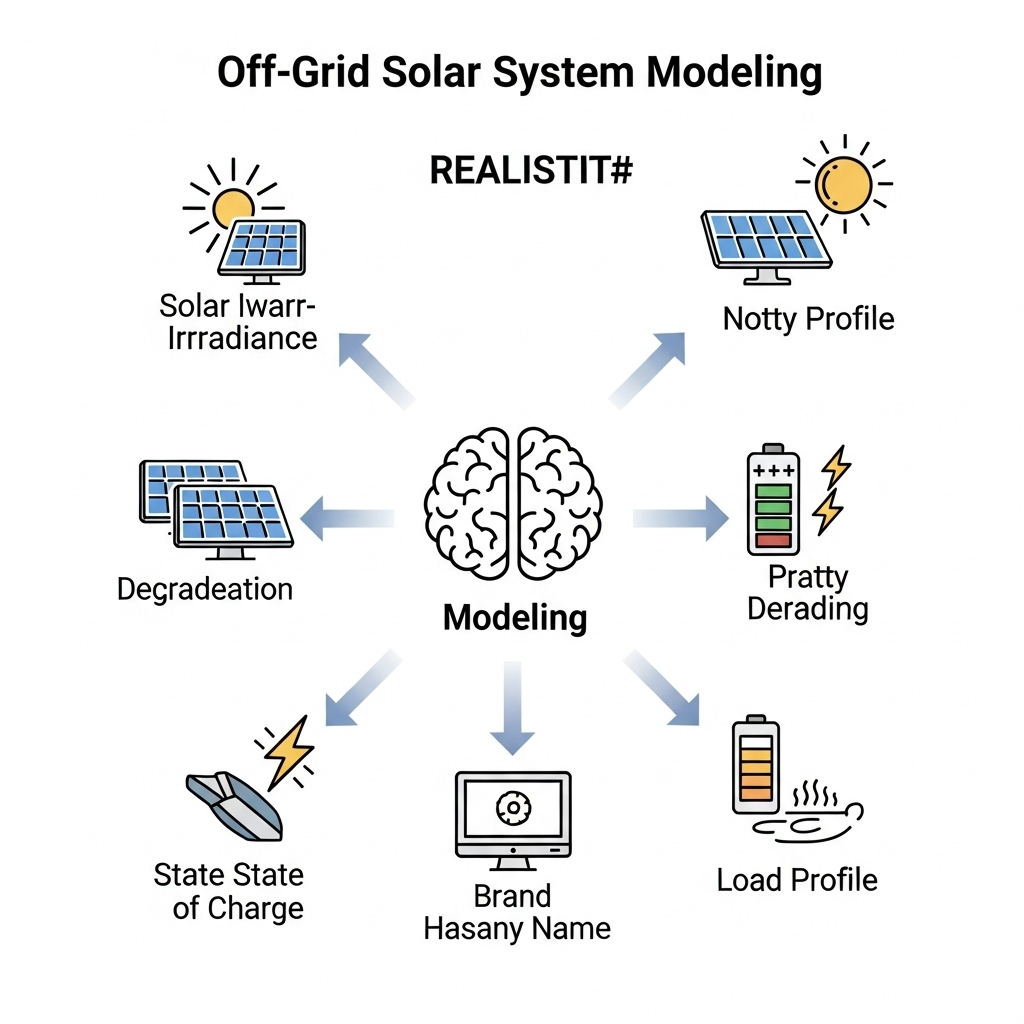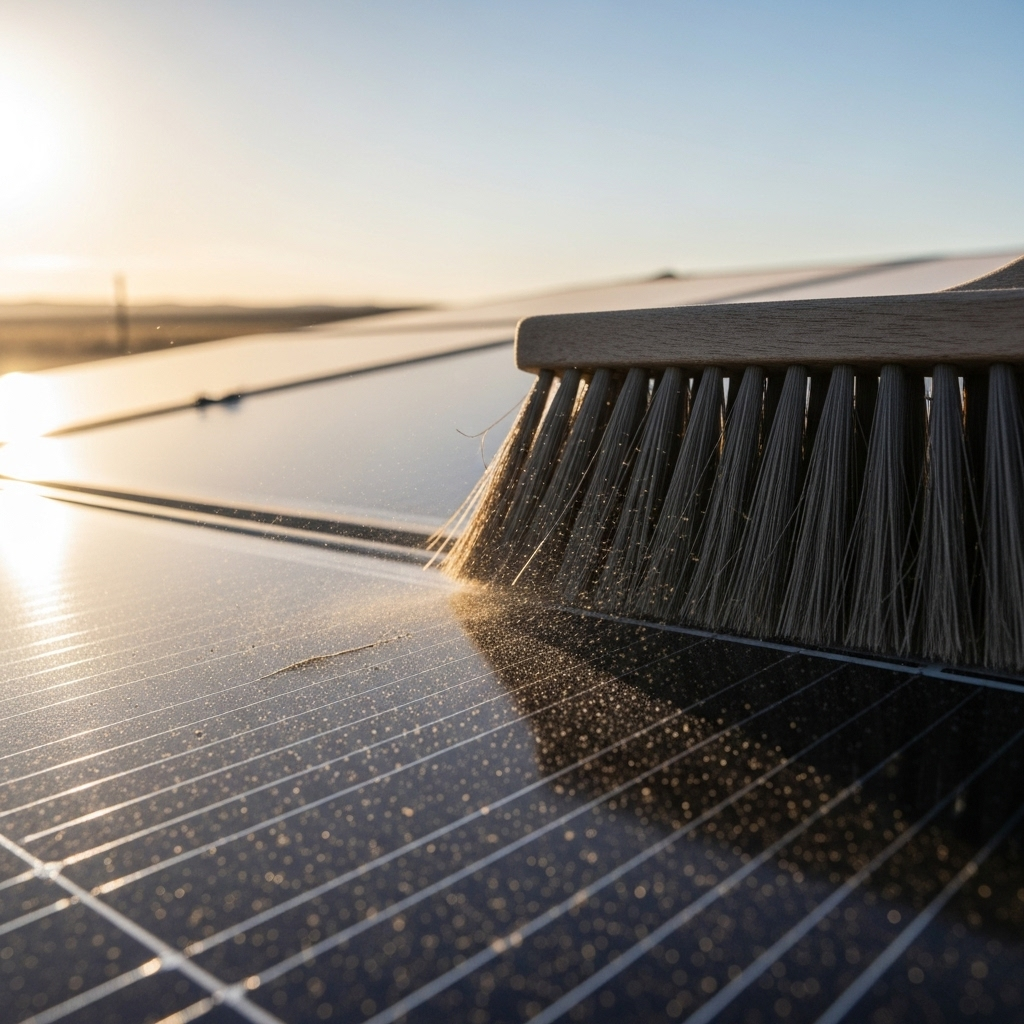Planning an energy storage system (ESS) is a significant step toward energy independence. Many calculations focus on immediate needs, like daily consumption and seasonal solar output. But what about changes over the next ten, fifteen, or even twenty years? Decade-scale variability—encompassing shifts in climate, grid policies, and your own energy usage—presents a complex challenge. Properly sizing a Lithium Iron Phosphate (LiFePO4) ESS requires a forward-looking blueprint to ensure your investment delivers value for its entire lifespan.
Understanding Decade-Scale Variability in Energy Systems
A truly resilient energy system anticipates more than just tomorrow's weather. It accounts for slow-moving but impactful trends that unfold over many years. Ignoring these factors can lead to an undersized system that fails to meet your future needs.
Beyond Daily Cycles: What is Long-Term Variability?
Long-term variability extends beyond the predictable daily and seasonal patterns. It includes factors like multi-year changes in weather that affect solar irradiance, evolving electricity rate structures, and shifts in grid stability. As the International Energy Agency (IEA) points out in its report, The Power of Transformation, achieving cost-effectiveness with renewables calls for a fundamental transformation of the energy system. This transformation introduces uncertainties that your personal ESS must be prepared to handle. Furthermore, your own energy consumption will likely change as you add electric vehicles or new appliances.
The Impact on Solar and Storage Performance
These long-term shifts directly affect your system's performance. A string of years with lower-than-average solar irradiance can strain a minimally-sized battery. At the same time, the battery itself is aging. A LiFePO4 battery's capacity naturally degrades over its long life. A system sized perfectly for year one might be 20% less effective in year ten if this degradation is not factored into the initial design. This makes long-term performance data crucial. The U.S. Department of Energy's work on the PV Fleet Performance Data Initiative highlights the importance of analyzing performance across different locations and conditions to build more effective solar installations.
Why LiFePO4 is Suited for Long-Term Applications
When planning for a decade or more, your choice of battery chemistry is critical. LiFePO4 stands out for its unique combination of longevity, safety, and stable performance, making it an ideal foundation for a long-term energy strategy.
The Chemistry of Longevity and Safety
The strength of LiFePO4 comes from its exceptionally stable phosphate-based cathode structure. This chemistry is less prone to thermal runaway than other lithium-ion variants, making it one of the safest options for a home energy storage system. This stability also contributes to a very long cycle life. High-quality LiFePO4 batteries can endure thousands of charge-discharge cycles while retaining a high percentage of their original capacity, ensuring they perform reliably for well over a decade.
Performance Metrics for Long-Term Yield
To maximize the lifespan of your LiFePO4 battery, you need to manage key performance metrics. Depth of Discharge (DoD) refers to the percentage of the battery's capacity that is used in each cycle. While LiFePO4 batteries can handle deep discharges, operating them at a more moderate DoD (e.g., 80%) can significantly extend their cycle life. Round-trip efficiency—the ratio of energy out to energy in—is another vital metric. LiFePO4 batteries boast high efficiency, typically over 95%, minimizing energy losses. As detailed in this ultimate reference on solar storage performance, understanding how these metrics interact is fundamental to achieving sustained output and a better return on your investment over the long term.
A Strategic Blueprint for Sizing Your ESS
Sizing an ESS for decade-scale performance is a strategic process. It moves beyond simple calculations to create a robust and adaptable system. This approach protects your investment against future uncertainties.
Establishing a Baseline: Current and Future Loads
The first step is a thorough energy audit of your property. Analyze at least 12 months of utility bills to understand your current consumption patterns. But do not stop there. Project your future energy needs. Are you planning to buy an electric vehicle in the next five years? Will you be switching to an electric heat pump? These additions can dramatically increase your daily energy requirements. This forward-looking baseline is the foundation of your sizing calculation.
Factoring in Uncertainty and Degradation
Next, build a buffer for uncertainty. This includes accounting for battery degradation. A LiFePO4 battery might retain 80% of its capacity after 10 years, so your 'day one' capacity must be large enough to meet your needs in 'year ten'. A common practice is to add a 15-25% buffer to your calculated capacity. This extra storage accounts for unexpected grid outages, policy changes, and lower-than-expected solar generation. The Electricity Storage Valuation Framework from IRENA emphasizes the need to assess project viability under various scenarios, a principle that applies directly to residential sizing.
Modeling for Long-Term Solar Yield
Use historical solar data for your location as a starting point, but recognize its limitations. Consider long-term climate projections that may indicate trends in cloud cover or weather patterns. Hybrid systems that combine solar PV with battery storage are becoming standard because they provide a more reliable power output. This integration helps mitigate the risks of variability and ensures you can dispatch energy when it is most needed, such as during peak demand hours.
| Sizing Factor | Simplistic Sizing (1-Year View) | Decade-Scale Sizing (10+ Year View) |
|---|---|---|
| Energy Needs | Based on current 12-month average | Projects future loads (EVs, appliances) |
| Solar Yield | Based on typical meteorological year | Considers potential long-term climate shifts |
| Battery Degradation | Often overlooked | Plans for ~20% capacity loss over lifespan |
| Uncertainty Buffer | Minimal or none | Includes 15-25% buffer for grid/policy changes |
| System Scalability | Not a primary consideration | Modular design for future expansion is key |
| Resulting System | May be undersized in 5 years | Robust, reliable, and future-proofed |
The Role of System Integration and Flexibility
A correctly sized battery is only part of the equation. The intelligence that manages your system and its ability to adapt over time are just as important for long-term success.
Hybrid Inverters and Smart Management
A modern hybrid inverter acts as the brain of your ESS. It intelligently manages the flow of electricity between your solar panels, battery, home, and the grid. Paired with a smart battery management system (BMS), it can optimize charging and discharging cycles. For example, it can charge the battery with low-cost solar energy during the day and discharge it during expensive peak hours in the evening, maximizing your savings and reducing payback time.
Designing for Scalability
Your energy needs are not static. The best way to prepare for an uncertain future is to design a system that can grow with you. Opt for a modular ESS. Modular battery systems allow you to add more storage capacity in the future without needing to replace your entire setup. This approach provides flexibility and makes your initial investment more secure, allowing you to scale your system as your budget allows or as your energy demands increase.
Your Future-Proof Energy Strategy
Sizing a LiFePO4 ESS is about more than meeting today's electricity needs; it is about building a resilient and valuable energy asset for the next decade and beyond. By adopting a strategic approach that accounts for long-term variability, battery degradation, and future scalability, you move from a simple purchase to a long-term energy strategy. This blueprint helps ensure your system will deliver reliable, clean power, giving you greater control and peace of mind on your path to energy independence.
Disclaimer: This information is for educational purposes only and does not constitute financial or investment advice. Consult with a qualified professional before making any investment decisions.
Frequently Asked Questions
How much extra capacity should I add for decade-scale uncertainty?
A common recommendation is to add a buffer of 15-25% to your calculated energy storage needs. This helps account for factors like battery degradation over its lifespan, potential increases in your energy consumption, and variability in solar generation due to long-term weather patterns.
Will my LiFePO4 battery really last over 10 years?
High-quality LiFePO4 batteries are typically rated for 6,000 to 10,000 cycles and come with warranties of 10 years or more. When properly managed—avoiding consistent full discharges and operating within recommended temperatures—a LiFePO4 battery can be expected to provide reliable service well beyond a decade, retaining a significant portion of its original capacity.
Can I expand my ESS later?
Yes, if you choose a modular system. Modular energy storage systems are designed for scalability. You can start with a capacity that meets your current needs and budget, and then add more battery modules later as your energy demands grow or you wish to increase your energy independence.
Does weather variability really change that much over a decade?
While daily weather is unpredictable, long-term climate patterns can shift. Scientific studies show that multi-year cycles, like El Niño and La Niña, can affect regional cloud cover and solar irradiance. Planning for this potential variability ensures your system remains effective even during periods of lower-than-average sunshine.





Leave a comment
All comments are moderated before being published.
This site is protected by hCaptcha and the hCaptcha Privacy Policy and Terms of Service apply.